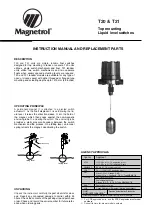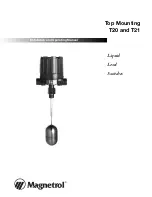
DES-7000/DES-7100 Layer 2 Switch User
’
s Guide
Switch Management
37
The communication between switches via BPDUs results in the following:
One switch is elected as the root switch
The shortest distance to the root switch is calculated for each switch
A designated switch is selected. This is the switch closest to the root switch through which packets will
be forwarded to the root.
A port for each switch is selected. This is the port providing the best path from the switch to the root
switch.
Ports included in the STP are selected.
Creating a Stable STP Topology
If all switches have STP enabled with default settings, the switch with the lowest MAC address in the
network will become the root switch. By increasing the priority (lowering the priority number) of the
best switch, STP can be forced to select the best switch as the root switch.
When STP is enabled using the default parameters, the path between source and destination stations
in a switched network might not be ideal. For instance, connecting higher-speed links to a port that has
a higher number than the current root port can cause a root-port change. The goal is to make the
fastest link the root port.
STP Port States
The BPDUs take some time to pass through a network. This propagation delay can result in topology
changes where a port that transitioned directly from a Blocking state to a Forwarding state could
create temporary data loops. Ports must wait for new network topology information to propagate
throughout the network before starting to forward packets. They must also wait for the packet lifetime
to expire for BPDU packets that were forwarded based on the old topology. The forward delay timer is
used to allow the network topology to stabilize after a topology change. In addition, STP specifies a
series of states a port must transition through to further ensure that a stable network topology is
created after a topology change.
Summary of Contents for DES-7000 Series
Page 111: ......
















































